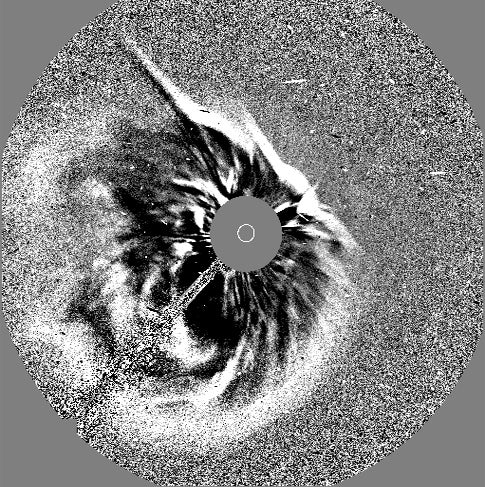On Tuesday morning at the American Astronomical Society meeting in Honolulu, a team of astronomers announced a slew of research updates relating to the Sun. First, a pair of astronomers, Bart De Pontieu from Lockheed-Martin and Scott McIntosh of the Southwest Research Institute, described their findings investigating one of the great, longstanding solar mysteries: how the chromosphere gets so hot. Second, astronomer Natchimuthuk Gopalswamy of NASA’s Goddard Space Flight Center offered an analysis of coronal mass ejections (CMEs) — violent ejections of a billion tons of plasma streaming from the Sun’s surface — and offered a deduction about how to forecast which ones will be disruptive and dangerous to Earth resources. Also, former AAS president, astronomer Andrea Dupree of the Harvard-Smithsonian Center for Astrophysics commented on the new solar findings.
De Pontieu and McIntosh began with a detailed description of their research on the chromosphere mystery. For years, the oddity of the Sun’s temperature environment has befuddled astronomers. Your oven is hot deep inside and gets progressively cooler as you move farther away from it. However, the Sun is extremely hot deep inside and gets cooler far away, except that the chromosphere, the thin region of the Sun’s atmosphere visible as a “ring of fire” during solar eclipses, is extremely hot, despite its distance from the Sun’s center. Similarly, the Sun’s outer atmosphere, its corona, is also exceptionally hot. Solar physicists cannot yet explain why.
But the new research takes a big step toward solving the chromosphere mystery. De Pontieu and McIntosh found that a combination of sound waves and the Sun’s magnetic field may be responsible for the hot chromosphere, which is important to understand because it produces most of the deep ultraviolet radiation that bathes Earth and creates our planet’s ozone layer.
The researchers suggest the secret lies within the Sun’s spicules, short-lived jets of hot plasma that shoot upward at fantastic velocities, briefly pushing against 27 times Earth’s gravity to tower over the Sun’s visible surface. Sound waves provide the basis for the answer, according to McIntosh. They build up slowly inside the Sun and are released through magnetic cracks in the Sun’s surface, becoming visible as spicules. The Sun’s dynamic magnetic field creates these temporary “leaks,” which the low-frequency sound waves can pass through. “There’s much more wave energy leaking out of the Sun than anyone previously thought,” says McIntosh. The team also employed sophisticated computer models that reinforce the observations they made using the SOHO and TRACE spacecraft.
“We always knew that magnetic fields were the guilty party,” says Dupree. “This is exciting because the lessons we are learning from the Sun can be applied to other stars in the future too. What we’re seeing is like Houdini — the magnetic field lines bend and the waves get out to heat the chromosphere.”
For his part, Gopalswamy offers a distinction between coronal mass ejections that are interesting to study and those that offer dangerous consequences for Earth. These mammoth solar storms offered a focus for Gopalswamy and his team of scientists, who studied them using the SOHO and Wind spacecraft. “Some CMEs produce radiation storms and some don’t,” says Gopalswamy, “or at least the level of radiation is significantly lower. The trick is to identify the ones that can produce dangerous radiation, so we can warn astronauts and satellite operators.”
The team found that CMEs with the potential to cause Earth damage “scream” in radio waves as they slam through the solar wind. What results a short time later, then, is a massive particle storm that does not appear with more mild-mannered CMEs. The radio-loud CMEs give themselves away, and the particle storm follows more slowly than the radio burst, giving between a few tens of minutes and a couple hours to warn those who need to know about the oncoming storm.
Gopalswamy and his team mapped CMEs and found the radio-loud versions originate mostly from the portions of the Sun in line with Earth, in bands around the Sun’s equator, while radio-quiet CMEs mostly come from the Sun’s edges. The pioneering study will open the door to further research on this topic.










